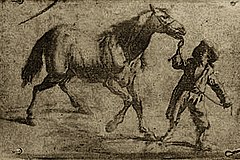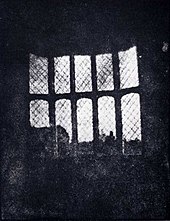‘Going North’
‘Going North’ montage
For this assignment I wanted to explore a journey that was likely to be ‘unpicturesque’ – one that was characteristic of many journeys on busy roads through rather boring countryside. I travel a lot for my work – currently in Africa and so have photographed many ‘journeys’ – and am planning to review these in a review of ideas about ‘safari’ for Assignment 4. But for this assignment, based on the discussions in the course materials and my work on ‘Christmas 2014’, I wanted to focus closer to home and try something a bit different. I have become interested in some of the ideas from ‘New Topographics’ – Lewis Baltz‘s aim to look for things that were most unremarkable, presenting them in as unremarkable a way as possible to ‘appear objective’ and not show a point of view. Also to show how we use and construct the landscape to make our busy lives more convenient. I am also interested in the different effects of different ways of making the image – should they be sharp and studied with a political message as in Nadav Kander‘s work on China and Paul Graham‘s Great North Road, or deliberately blurred and out of focus to convey a subjective mood as in Robert Frank’s Americans and Chris Coekin‘s work, or even more uncontrolled as in mobile phone images.
I started by experimenting a bit with my mobile phone on train journeys. Building on some earlier images of train journeys in London (see Docklands Journey). I used my iPhone to take images of the train journey home from London to Cambridge as we went past open fields, suburban allotments and warehouses and included some images of the passengers (See London to Cambridge) On this iPhone it is not possible using the normal camera to control shutter speed – the focus is on the actual image. These gave me very much a feeling of movement and going through the suburban landscape. I also like some of the reflections in the windows. But an aesthetic I need to think about a lot more – what actually creates an effect/mood and what is just snapshot and what exactly am I trying to convey – the passage of time, isolation of commuters, ordinariness of countryside, specific landmarks of human intervention or maybe something new and less cliche?
I also experimented with walking – the idea of a disturbing inward journey. On a walk along the River Holme I photographed light and human made objects and litter along the way. (See HolmeWalk images) I was interested in how some of these things became quite disturbing – footprints in mud, hanging ropes like dead birds, electricity boxes like nestboxes. Plastic tubes like underground snakes. I photographed in colour and then converted to high contrast black and white in Lightroom, but without any further Black and White manipulation because I wanted the images to have an element of accident, not too contrived. I am planning to use these images in my Book Design course to illustrate the poem ‘Jabberwocky’ as a scary fable. This type of approach is also something I want to explore further – inspired by some of the images of Japanese photographers like Daido Moriyama and Hiroshi Sugimoto.
For the actual assignment on this course, I chose a two and a half hour journey up the A1 from Cambridge to Barnsley to take my assessment materials to OCA. I had experimented with shutter speed and lenses on my various journeys in Africa. In order to maintain the more ‘objective’ and random element and also not to spend all my time fiddling with camera settings to free me to focus on the image itself, I decided to take two series each using a different lens and format, but within each series using the same approach and then decide which series is most interesting and select the images:
1) Going North – my 28mm wide angle fixed lens in order to give me the widest choice of composition, including some dramatic distortion, in landscape format. Using shutter speed priority on a fast shutter speed of 1600.
2) Going South – my 100mm telephoto in portrait format to give a much flatter image and using a slower shutter speed.
I looked at the route on Google Street View in advance. But as the road is extremely long and the interest in my images would be from traffic and events along the route rather than ‘views’ I did not pursue this area of exploration far. I used a standard map during the journey itself.
I was interested in using photography as a way of exploring and discovering the road, rather than shooting to a predetermined formula (following photographers like Kander and Baltz). I took over 1000 images going up and 500 coming back because it was very difficult to predict any ‘decisive moment’ so I shot images at frequent intervals whenever I saw anything potentially interesting and/or characteristic of a particular stretch of road. I found the wide angle fast shutter speed images much more interesting – partly but not only because of the interestingly dreadful heavy rain for most of the journey and the feeling of potential risk that this added. Though it was difficult to actually shoot near collisions without provoking them! The dramatic gloomy sky was also a constant until very nearly at the end of the journey, framing things like water towers and pylons. The images themselves are mostly very sharp and some are quite like those of Paul Graham, rather than Coekin.
The big challenge was then what to make of all the images and ways in which the photographic process had made me constantly aware of new things. I started by thinking of selecting 12 images as a montage for 12 stages of the journey (See the different pages of square thumbnails in Going North on Zemniimages website). But I was not sure if that would be cheating. If I was to select 12 images I still needed to think exactly what I was trying to say – choosing deadpan images that showed the sameness of much of the countryside? or the dramatic cloud breaks? or the awful traffic?
In the end as I reread the material for this part of the course, I decided to experiment with typological ideas. I had started to notice the many different signs – particularly industrial estates trying to sound rural like ‘Honeypot Lane’, ‘historic market towns’ and the variety of traffic signs. I could have taken this typological approach to start with, but then the images could have become too studied and I would have stopped the feeling of journey as exploration. In the end, looking through what I found to be some of the most interesting images I noted that they were often based on colour. So I thought of doing a post-selection of red vehicles – an after-the-event I-Spy red cars game used to keep children happy on a boring journey.
I think the images are best displayed as a montage of square images so that they can be seen all at once. For a slideshow I would have selected rather different images that told a clearer narrative or anti-narrative. I could have cropped and processed the images in a more considered montage with aesthetic dynamic diagonals and abstract colour patterns. But I think that would have negated the rather random nature of the images and my ambivalent feeling about the journey. On the one hand it was pretty long, tiring and at many stretches boring. The greys and plastics of much of the ‘architecture’ and the feeling of so many people busily going somewhere but nowhere special? a bit depressing for my picturesque sensitivities. At the same time I had found the photographic process added a frisson of interest of the chase and spotting new things – more than just I-Spy. And basically that is just how life is much of the time – random, fractured, disordered and much the same. If this series manages to convey that rather than the somewhat more romantic movement of some of my earlier train journey images then it has achieved much of its purpose.
The Brief
Produce a series of approximately 12 photographs that are made on, or explore the idea of, a journey. The journey that you document may be as long or as short as you like. You may choose to reexamine a familiar route, such as a commute to work or another routine activity, or it may be a journey into unfamiliar territory. You may travel by any means available.
Introduce your work with a supporting text (around 500 words) that:
• Describes how you interpreted this brief.
• Describes how your work relates to aspects of photography and visual culture addressed in Part Two.
• Evaluates the strengths and weaknesses of your work, describing what you would have done differently or how you might develop this work further.
• Identifies what technical choices you made to help communicate your ideas, and also references relevant artists and photographers who have influenced the creative direction of your project.
• Explains your reasons for selecting particular views, and arriving at certain visual outcomes.
Reflection
Just a reminder to look at the assessment criteria again. Think about how well you have done against the criteria and make notes in your learning log.
Link to preliminary ideas about your critical review (Assignment Four)
Link to ‘Transitions’ task (Assignment Six).






























